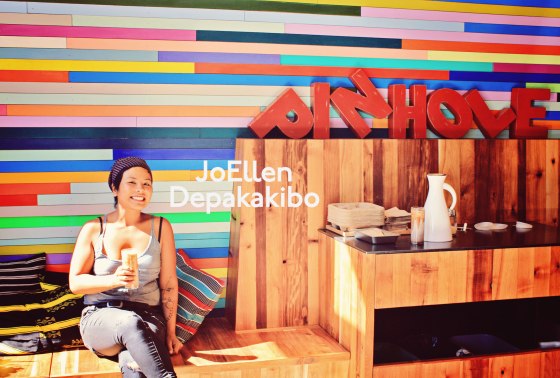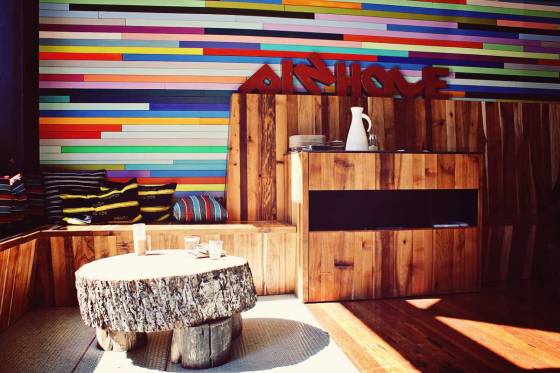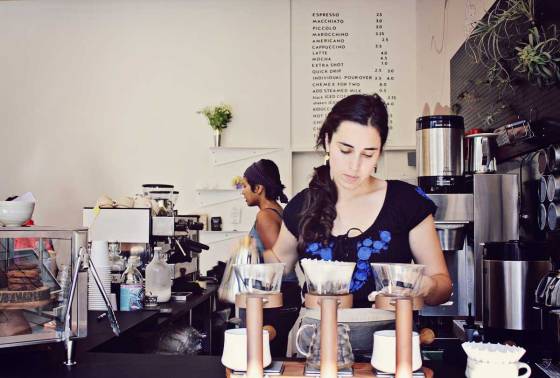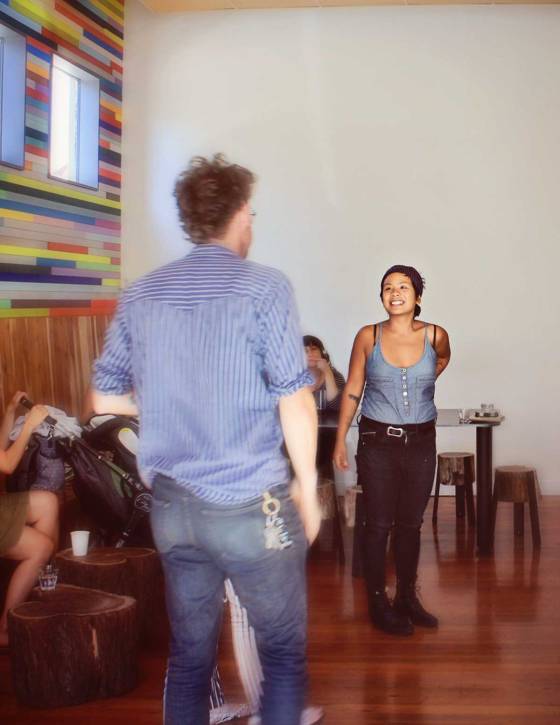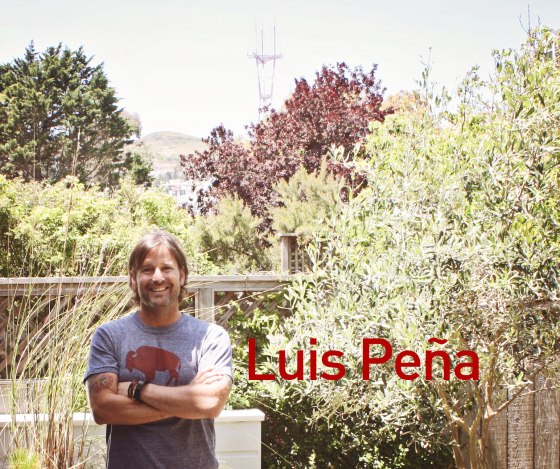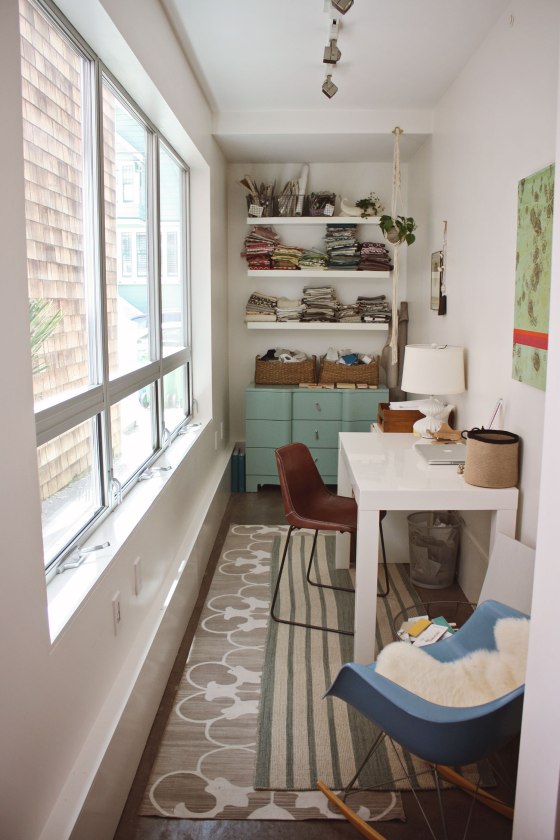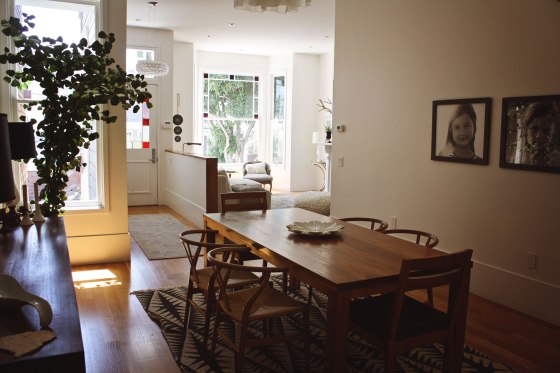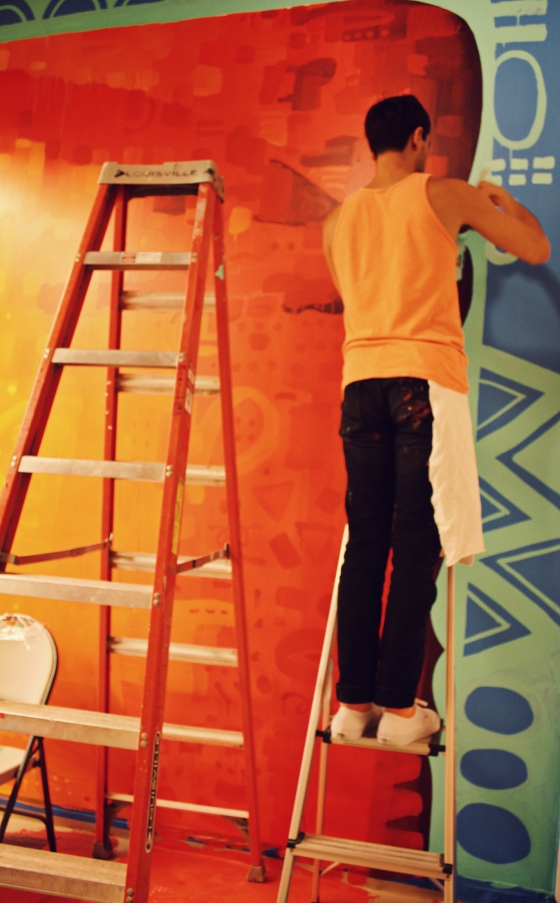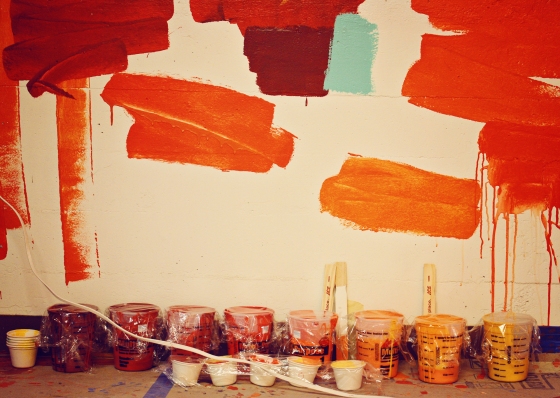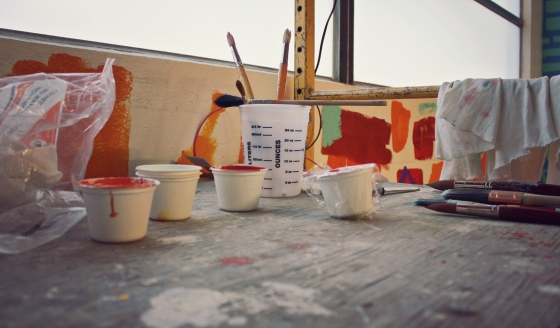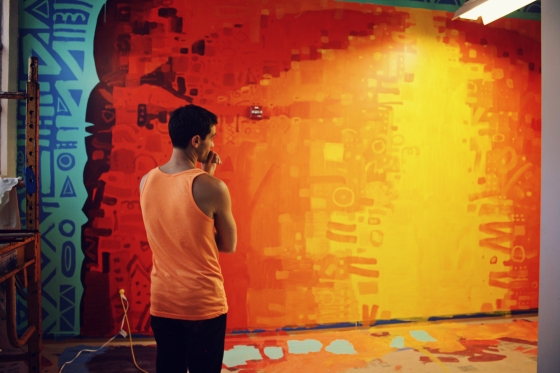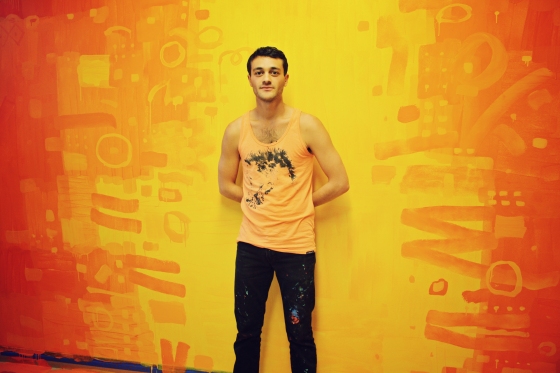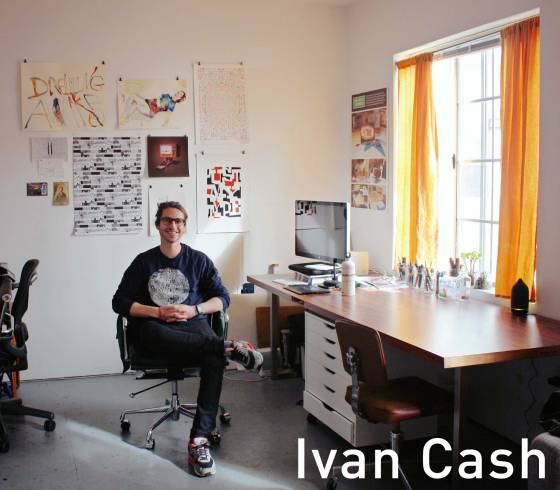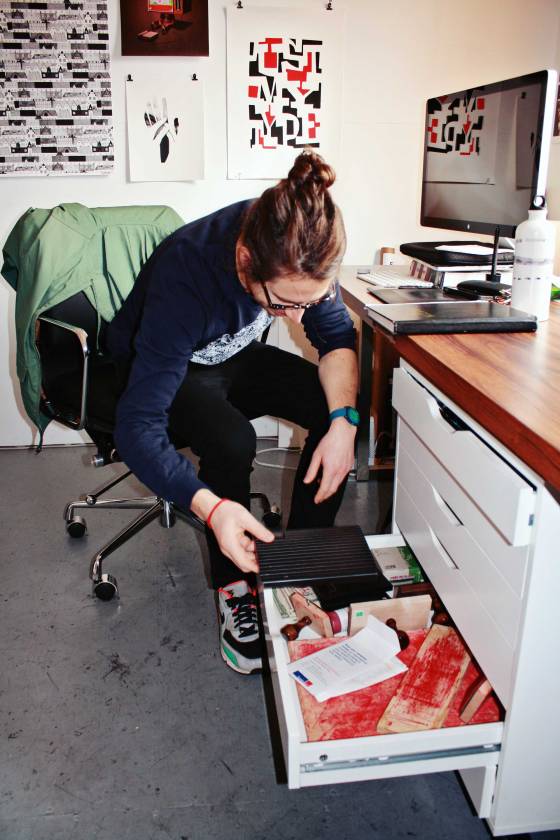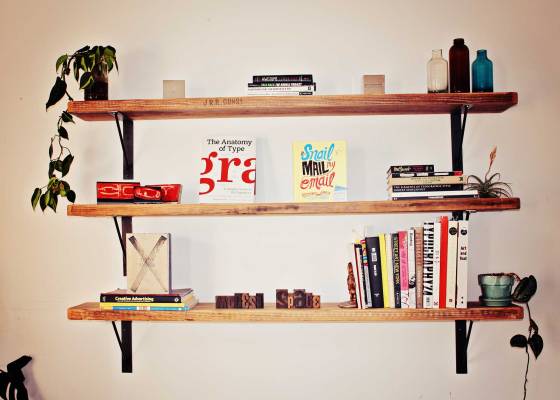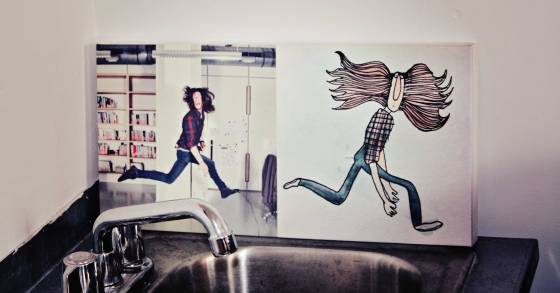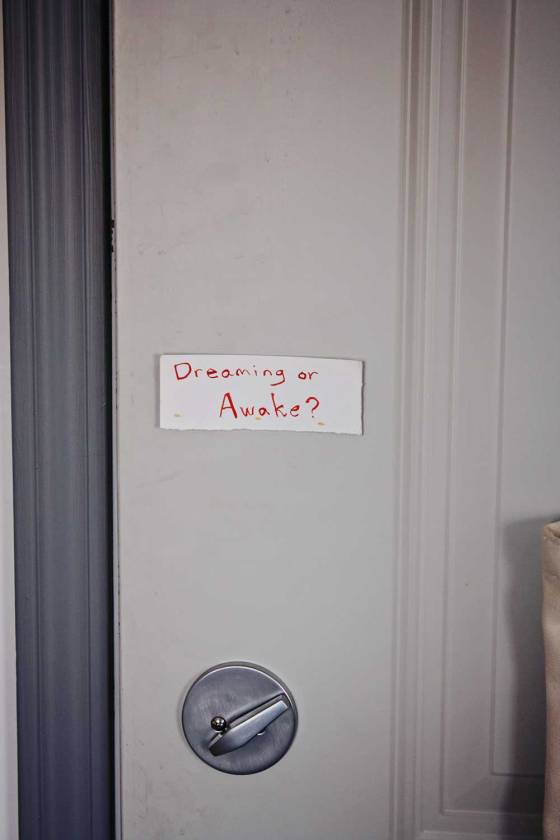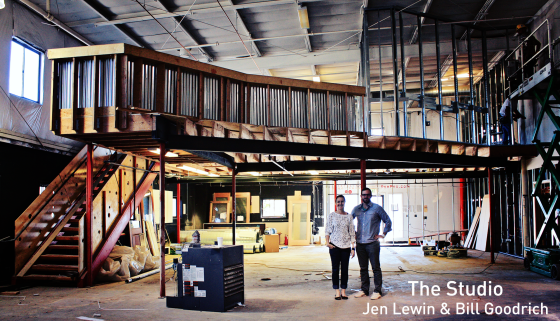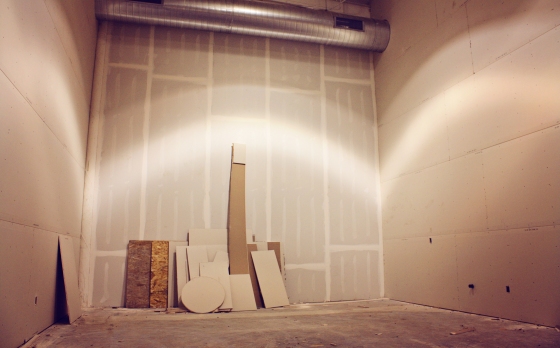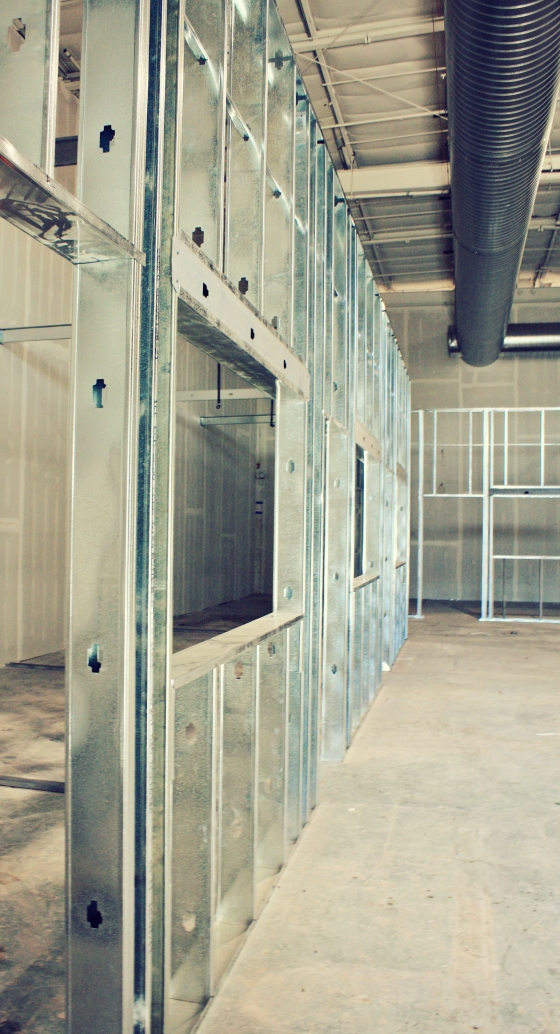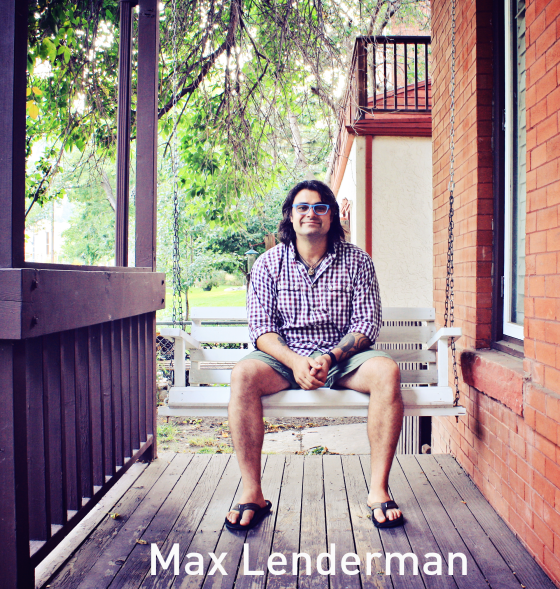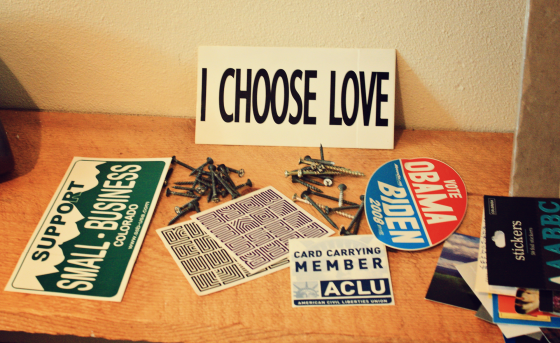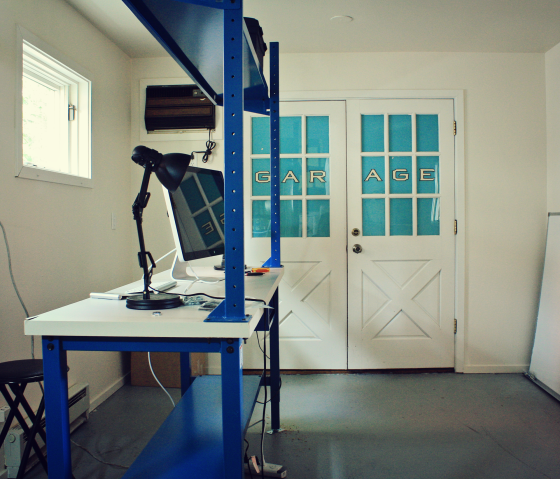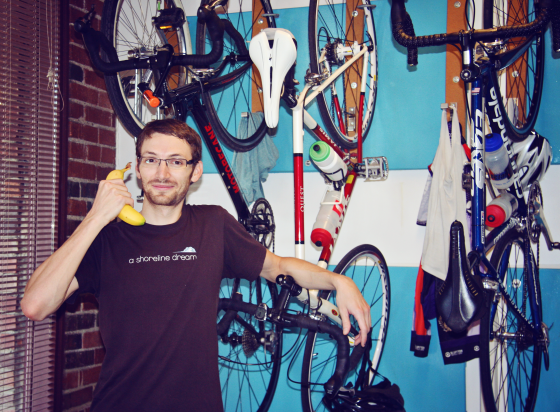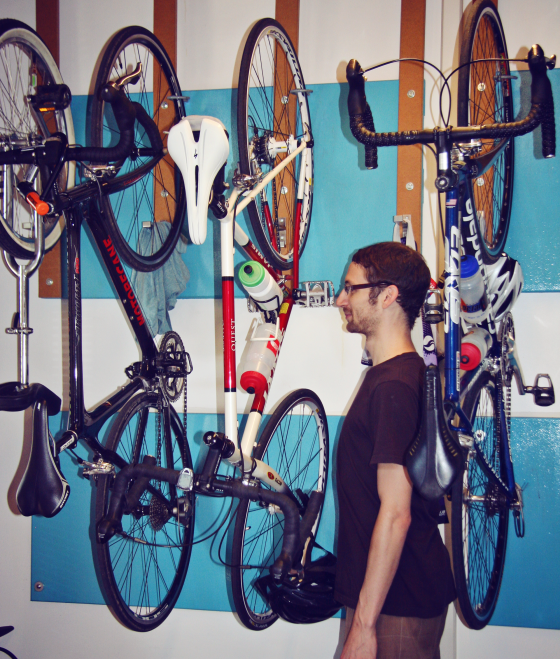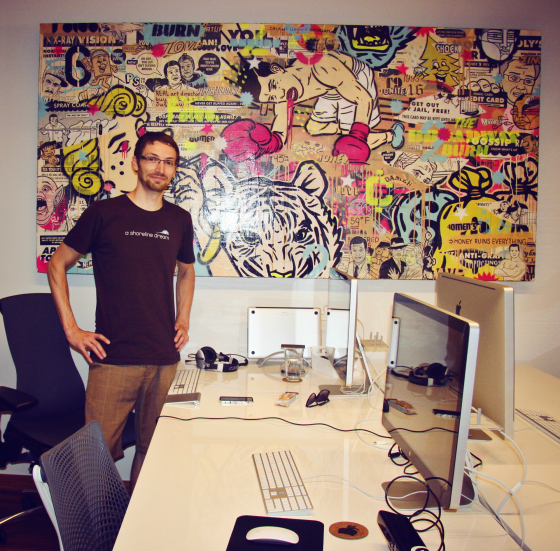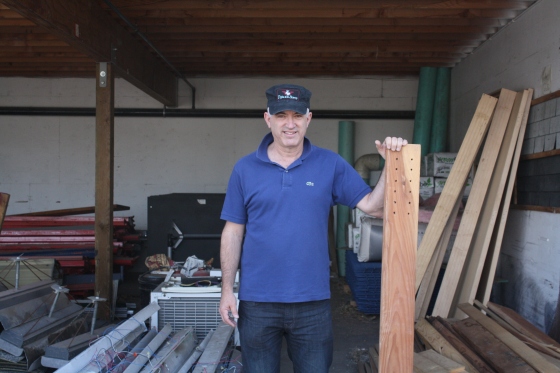
What projects are you currently working on?
– We’re really excited about a small but impactful headquarters office and showroom for The Lighting Agency in the Highlands, a lighting manufacturer’s rep firm. This project will begin construction this summer and is envisioned as a living—and authentic—showroom.
– We’re working on a 50,000 sf headquarters for Brinkman Partners, a Real Estate development and construction company in Fort Collins.
-17P on Platte Street will be a 100,000 sf office building that will capture some of the overflow office users from LoDo on the edge of the Highlands neighborhood due to be open in late summer of 2014.
– Also on Platte Street and across the street from the 17P project, we’re designing the second building for The Nichols Partnership and the galvanize team–galvanize 2.0. It will be twice the size as the first one at 70,000 sf, four stories, a cafe, and a sky-lit atrium and rooftop gathering space overlooking downtown. g2.0 will be an evolved version of the model with startups that are a little more established and have a larger footprint. This project is well underway and will deliver in mid-2014.
– We’ve been working with Red Bull in Santa Monica on a real estate strategy and trying to map out a long-range plan. Should Red Bull stay, move, or build is how we began. Our services have been aimed at strategic exploration of the various options, envisioning a transformed workplace and considering the economics of a multitude of site alternatives.
– We’ve been engaged by the ownership team of the former Denver Newspaper Agency to help re-envision the former warehouse, now known as 25//70. With 320,000 square feet of former warehouse, the developer originally planned a Design Center, but is now exploring a much more diverse program that could include educational facilities, showrooms, public meeting and event space, as well as a creative co-work environments. We’re to first helping to re-think the comprehensive program and positioning the building for a late 2014 delivery.
– There are a couple of large high-rise projects, Headquarters Buildings, and other high-impact projects for Denver that are extremely exciting but still confidential—more to come on these…

What are your favorite projects from the past?
In the most recent past, I’ve been really excited about galvanize. We really valued the innovation and risk-taking; they didn’t need proof of concept, but rather take the risk, go with your gut and be willing to make necessary changes on-the-fly. Galvanize is a very agile company; other companies are very particular about every file drawer and how many each person has, but the team at galvanize understood that today’s workspace is about being agile and mobile—and connecting. All you need is your laptop and keys. No paper. Everything is digital. We made a living representation of this innovative digital model. It was really exciting for me to break the rules and validate them in real time. I love that. It’s what we’re all about, and how we work as well—this really changes the game from an architectural firms point of view.

What are your initial thoughts on the importance of creative space?
There has always been this idea that creative space needed to allow the user to finish it or define it individually. If you look at the tech model, there is no personal anything. It’s just simply the technology and the people. I think a creative space is more focused on collaboration that encourages people to talk and interact with one another. It gets rid of all of the personal stuff. You either need to have inspiration or information on your desk; if it isn’t one of those two categories, get rid of it. This is especially true as we densify and real estate gets much, much smaller. People have less to work with in our office space and we really need to decide what’s more important to have at our fingertips; there’s a real trend towards that and for me, that is the most important layer of creative space. Diversity is also a key component: sometimes I sit at ‘the bench’, other times I’m downstairs at the bar and still on my WiFi, the multitude of local coffee houses or simply at our conference table—I consider all of these places my office. I have different modes of creativity. Sometimes I’m really focused on complex problems I need to solve and other times I need to be connected as well as be inspired by others—having the ability to change my environment allows me to tailor my space to my immediate needs.
At Open Studio, our creative space is one long table—the bench—and everyone’s near one another. It forces everyone to assert themselves and participate in conversations—all of them. It helps solve problems more rapidly. To be creative, we need to be problem solvers. Putting everyone together in one space helps collaboration on expertise. I might be an expert in one thing and you in another; close proximity forces our specialties to come together. It’s this type of connection and freedom that allows everyone to really be present and participate.

What are your most important things in your space?
You’ve got to surround yourself with talented, creative people—all smarter than you. That’s the most critical thing—that, and the pen—the pen because I diagram everything. I diagram for my accountant, my insurance company—everyone I interact with gets some form of diagram at some point, it’s just how I think. I can articulate a lot of things and use words to get ideas across, but it only goes so far. A lot of times, physically drawing your idea – as ugly, silly or cartoon-like as it might be – gets the point across. It’s a universal language. I learned that while working in China when I couldn’t speak Mandarin and I had been so reliant on words to convey my architectural ideas. The pen was magic. Drawing details, diagrams, etc. was very primitive yet universal—it was incredibly effective. When I was in college, I’d carry around a sketchbook and pick up little pieces, bits and conditions of every city I visited. I’d sketch a little detail and since I tend to remember drawings, the idea would be imprinted in my memory—simply by drawing a very dumb sketch. It just works.

My background is more on the design/development for web and mobile, but it sounds like there is a strong similarity between your daily problem solving process. Do you agree?
They are such different worlds, but they are so the same. We just produce a different model. When I came to talk at BDW, I understood your class because I have an entrepreneurial spirit, but my craft is architecture. I think what we do and how we think points to many similarities and friendly alliances. It’s more about the strategy. I think that’s why Jim Deters, the founder of Galvanize, and I get along so well. There’s so much similarity in what we do and yet so many differences in our areas of expertise. Our approach to what we have to do every day is incredibly similar; however, our skills and craft couldn’t be more different.
A huge part of our strategy was to hire a culture that is laid back. When we interview someone, we start with a cold beer to break the traditional barriers down and let them know we’re informal and get to know them personally—we often don’t even look at their resume first, it’s the work and the personality that we hire for. It’s a tricky balance, because we expect a high level of proficiency on very serious projects—but in a casual and informal way. We value a good attitude, from someone that knows how to be a professional and most importantly, inspire others. I like to think if you show up to the table, you should be a surge of inspiration for everyone else. This strategy isn’t that unique to creative agencies, what’s unique is that it’s first on our priority list, and we live it. Eventually we get to the other important things, but you can’t teach someone how to act and you can’t have a bad apple sitting at the table. You don’t always get this at other firms, since there is so much autonomy. Typically, you interact with your co-workers at the conference table and then return to your personal space. It takes away from people learning from one another; in order to collaborate afterwards, a person will need to assert themselves into another’s space and its unnatural—especially on tough topics. It’s almost as if you’re entering someone’s living room uninvited—it can get a bit uncomfortable. We’ve observed this behavior and we aren’t set up like that here on purpose.

Why did you decide to start Open Studio?
My business partner and I “decided” to start open studio | architecture, many many times over the past 10 years but in the end it came down to a few key things. The list of things I wanted to try to accomplish relative to what I felt like I could do in my past life got so large that it was obvious the tipping point happened—it was very similar for Brad, and we happened to have the feeling at the same time in late 2011. In other words, there are so many great things about all of the places I’ve worked, but no matter how good they are, you look at the things that you wish you had done differently. I’m one of those people who look at how to change things or do things differently. That list of things I wanted to try to do got larger and reached the tipping point. It was almost defined by the reaction to hitting stumbling blocks; it’s not that uncommon. The other thing was, I genuinely felt in my gut that my view was different enough that it would work. I woke up one day and truly believed it with no uncertainty whatsoever. That’s how it happens I think—for most. An entrepreneurial mindset was taking over; I never exercised or embraced the entrepreneurial side of myself. After we resigned, we had no plan, wanted a break, forced this break and then all of a sudden we were faced with everything from insurance, space, technology, software and all the nuts and bolts that had always been answered before. All of these questions became opportunities. Choosing one platform compared to another was a choice. Every decision came back to the fact that we’re a design firm—every decision needed to reflect that. Fundamental decisions were opportunities for the first time, and we started having a place to go. What kind of space do we want? Small, tight and where everyone’s on top of one another. Purposefully. All of those decisions to be made you can question yourself, but the 18 months we’ve been on our own, we’ve come to realize there are so many things we’re just not going to know. We’re not even going to think of what we don’t know and that’s okay—we laugh about this topic all the time—you have to otherwise you’ll go nuts. You just take the leap, and when things come at you, you solve them. We’re problem solvers at our core, but we can’t and shouldn’t do certain things—its actually great that there are people who are experts in stuff you suck at; someone is an expert in insurance so you write them a check and they solve it for you. It’s not that big a deal. Some people get in their mind they need to know the answer to everything, but they don’t. You just have to know where your own limits are, and not try to do the things that are outside of your skillset. Then you have to hire the expert and focus on what you do best. It works itself out when you do it that way. It’s not that complicated either—I think that’s the little secret your employer doesn’t want any of us to know—we tend to remain scared into staying in our current job rather than making the jump.

How would you describe your personal design point of view?
Your point of view starts with things you can’t control: places you grow up, siblings, parents, disappointments, and inspired moments. Those formulate your interest or exposure; then you can start to make choices. “I like this or I like that.” It’s still a narrow view, but as you grow up, go to college, start working and broaden that exposure, you actually narrow your point of view. It’s starts like a cone and then goes back. For me, to that end, I grew up in a construction family with a father as a brick mason, so I spent a lot of time on construction sites. The irony is I never wanted to be in construction since it’s really hard work and I did it for forever; it’s rewarding, but I wasn’t inspired by it. That said, it was one step away from what I would ended up doing, clearly influenced by what I did not want to do for a living. It gave me the exposure where past experiences define what you don’t want to be but create a foil of what you want to do.
I rarely look at architecture or architects for inspiration, I tend to look at the entrepreneurs who are game changers. I did a presentation that talked about the things that really inspired me and I found actually not one of the stories I sited was architectural. They were people who had great ideas that changed the game in their own respective industries. An example of a story focused on Target’s pill bottle. A woman’s grandmother took the wrong pill because she couldn’t read around the pill bottle tube. She made it square instead of round so you can read the label easier; she also color coded it for family members, etc. It’s layers of simple ideas that drove a really important solution that was fundamentally a legacy thing; but she changed it. She identified the problem and took it upon herself to innovate. That inspires me. I love architecture, looking at beautiful buildings, creating them and hopefully inspiring others, but I’m more inspired by people who seek out solutions to yet unrecognized problems. To me, that starts to be my point of view. That kind of thinking and inspiration affect my interest in creating new solutions for buildings. We don’t have a lot of latitude sometimes: budgets, schedules, client aesthetic expectations. We have to be really clever and creative to sell an innovative, unique, progressive, game-changing idea and you don’t always get there and that’s okay. It all contributes to this long-term continuum idea of creating something useful as a whole. It’s never about a single project—its about inspiring others, being inspired and contributing to something greater than you.

How did you approach designing Galvanize?
It was not a singular vision. It was a collaborative project with everyone in this office, the galvanize team and Nichols Partnerships—among many others that all brought a great deal of creativity to the table—in a very short timeframe. Everybody lived the idea, owned it and brought their ideas to the table. It was a robust exposure to the technology and venture capitalist world; it was Galvanize’s vision from the beginning, we just helped make it happen. It was a beautiful building to begin with. The building had beautiful bones; people love historic buildings. It had skylights, an open central area and all these great features; how could we screw it up? A lot of it has to do with the community that Galvanize built around a simple structure. In the building itself, it’s simple but the fundamentals of the organization of the cafe, check-in desk, suites and desks; this all plays into the way it feels when you tour and walk through the space. You feel like you’re part of a larger community. The strategy and planning of the space mirrors the Galvanize community—simple, agile, unexpected and eclectic. By understanding what the community was we could design a transparent place for that to happen. You can literally stand almost anywhere in that building and feel like you can see 75% of the rest of it. It’s so open and it’s important for the community they built—physically and figuratively. This idea was a major part of the design strategy that helped augment and foster in the design process. It was a super collaborative team; everyone rolled up their sleeves and got dirty to solve a very complex problem in a short amount of time.

Where do you think the future of architecture is going and how do you think technology plays a role in these transformations?
I think there are two answers to that question. As architects, we create space or place, so we’re designing buildings, interiors and all of these things, but we’re also reacting to conditions. Conditions are constantly changing and are always out of our control. When a corporation is downsizing its real estate and increasing head count, we react to this new set of conditions. There are a lot of aspects to this business we don’t control and we’re just reacting to. On the flip side, we bring a lot of innovative problem solving to the table to help shape people’s point of view. There are a couple of paths that this will inevitably take. One is we’ll continue to see is less square space per person; clearly, that’s the trend now. The efficiency of a building and how many people we can pack into it is going to continue to trend: more people, less space. It’s just the way it is. It’s the same idea that drives the expectation for cell phones to get smaller with the expectation of having more functionality—its about crossing thresholds and then raising the bar. No one is going to say I want a phone that is heavier and has less power. It’s the same in real estate. I think there is a tipping point however, there’s only so much compression before we’ll begin to see new ways of thinking about space and how we use it, I think we are going to see more and more creative sharing of space. For example, retailers coming together and saying you’re a brand that appeals to people more in the morning than at night, so let’s rent the space together and at 4PM my store will take over. They get the benefit of half the rent rate. It’s the same thing as zip car. A lot of that crowd sourcing and consuming together is going to form the architecture of the future. We’ve already seen it and we’re going to see different layers to that. We’ll see it in the way we staff projects, and I believe we’ll begin to see a very blurry line between what it means to “work for someone” with much more right-time/right-sized contract work—it will transcend all industries. These trends will also change real estate needs. For us, being agile and aware of what’s happening in one industry and adopting ideas to another is something we’re already doing and I think more and more of that awareness and adapting ideas across platforms is a necessity. It will truly innovate new ways of thinking. Finding more ways to create more flexibility but not lose your financial assurance will be a tricky one to solve, but the industry will demand flexibility. Technology will play a huge role in this adaptive flexibility and crowd source utilization—when you’re sharing rooms in Galvanize, you can hop on an app and reserve it; it’s not written on a piece of paper that could get lost, it’s real time. That’s how we’re going to have to share. You still need to have it available like the zip car, so our expectations won’t change. We’re going to have to make the technology change.

Is there a specific type of space where you feel the most inspired?
The Pantheon. It’s a building from 99AD in Rome, and it’s amazing. This seems very obvious to me as an architect suggesting this place, but in terms of space, it is so fundamentally amazing to me. It’s a building that breaks all the rules. We spend our entire careers ensuring that water stays out of buildings but the Pantheon has a huge hole on top of it. The Oculus in the top of the roof breaks convention, and is so innovative it’s still iconic thousands of years later—that’s not easy to do. I lived in Rome in the early 90s so I went there literally every day; it was like my little daily ritual. The sun comes across and hits the ceiling coffers at different times of day and is so simple and so inspiring. Living in Rome is something in itself, but going to the Pantheon every day is amazing. Being there, understanding how it connects to the city and seeing the light is an experience. It feels cliche since I’ve spoken a lot about entrepreneurism and I read publications like Wired and Fast Company rather than Architectural Record but the Pantheon follows the path of an entrepreneur by breaking the rules and doing it right. I am a religious Fast Company guy; I’ve bought more subscriptions for my friends than you can even imagine. For me it does seem a little weird to answer that question with a piece of architecture, but it’s a pretty bad ass building in an even better city.
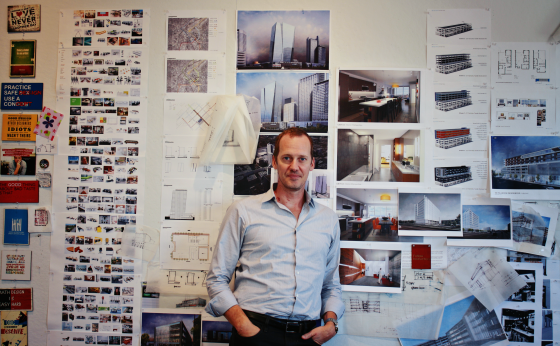
Words of wisdom?
I don’t think I have any words of wisdom. We’re learning on the fly. I’ve been doing this for a while now – over 18 years. There’s always something new and I think every architect knows that once you think you have it down, there’s something else you’re required to do and had no idea about. Maybe the advice would be don’t think you have it solved, be humble and maintain a learning attitude; there’s so much we don’t know.
